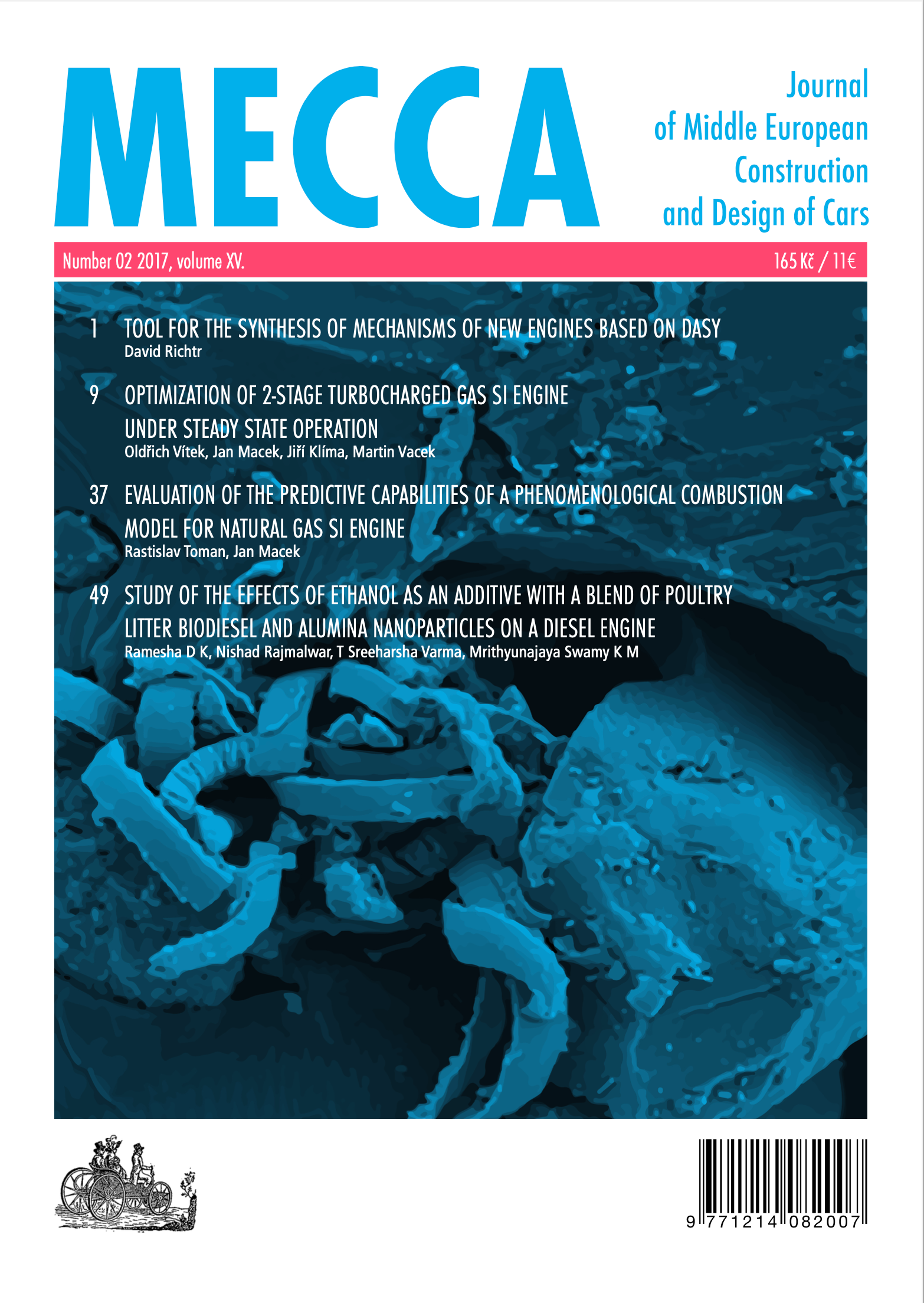EVALUATION OF PLUG-IN PARALLEL HEV TOPOLOGIES USING OPTIMAL CONTROL METHODS AND VEHICLE DYNAMICS SIMULATION
DOI:
https://doi.org/10.14311/mecdc.2020.02.03Abstract
Hybrid electric vehicle (HEV) powertrains with parallel topologies are among the frequently used layouts, because of their easy applicability on an existing conventional powertrain, by the addition of hybrid modules with mild, full, or a plug-in capability. This paper investigates three of such parallel HEV topologies: P2, P3, and P4; all in a plug-in variant, to find-out which one performs best. Apart from the topology consideration, one of the other common questions or challenges in HEV development is the ICE concept selection. To address it, the paper combines the three HEV topologies with three technologically different internal combustion engines, all with the same power outputs. Then, all the powertrain and ICE combinations are tested in homologation driving cycles and vehicle dynamics simulation test – different acceleration tests – giving a holistic methodology suitable for thorough HEV topology evaluation, identifying all possible hybridization benefits. To find the maximum CO2 potential, it is convenient to exclude the effect of the energy management control strategy on the CO2 result in a charge sustaining driving cycle; therefore, to use some optimal control method. For this task, the paper compares the Equivalent Consumption Minimization Strategy, that realizes a Pontryagin’s minimum principle against the Dynamic Programming optimal control method, which is based on Bellman’s principle of optimality. Both control methods are available as a part of GT-Suite 0D/1D/3D multi-physics CAE simulation software, that is used in our whole study.
Downloads
Published
Issue
Section
License
Copyright (c) 2021 Rastislav Toman, Jolana Heřmanová

This work is licensed under a Creative Commons Attribution 4.0 International License.
Authors who publish with this journal agree to the following terms:1. Authors retain copyright and grant the journal right of first publication with the work simultaneously licensed under a Creative Commons Attribution License that allows others to share the work with an acknowledgement of the work's authorship and initial publication in this journal.
2. Authors are able to enter into separate, additional contractual arrangements for the non-exclusive distribution of the journal's published version of the work (e.g., post it to an institutional repository or publish it in a book), with an acknowledgement of its initial publication in this journal.
3. Authors are permitted and encouraged to post their work online (e.g., in institutional repositories or on their website) prior to and during the submission process, as it can lead to productive exchanges, as well as earlier and greater citation of published work (See The Effect of Open Access).

